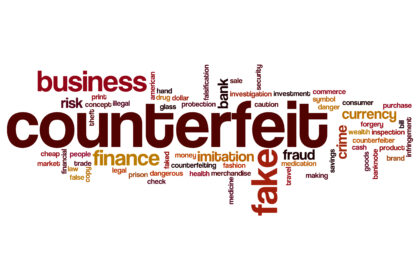Consumer Fraud: The Confidence Trick of the Digital Age
Consumer fraud isn’t just about stealing wallets anymore. It’s a confidence trick for the digital age, a carefully constructed illusion designed to exploit our trust in technology and convenience. Fraudsters are like digital pickpockets, using sleight of code and social engineering to manipulate our desire for a good deal or a quick solution.
Imagine a digital funhouse mirror reflecting our online habits. Legitimate websites become distorted parodies, enticing deals morph into financial mirages, and friendly social media interactions twist into manipulative masquerades. This is the essence of consumer fraud – a warped reality built on stolen trust and exploited vulnerabilities.
The consequences of consumer fraud extend far beyond financial loss. It erodes our sense of security online, leaving us hesitant to embrace the very tools that offer convenience. It creates a digital landscape filled with suspicion, where every click feels like a potential gamble. By understanding these deceptive tactics, we can reclaim the digital marketplace, turning the funhouse mirrors back on the scammers and navigating the online world with confidence.
While online shopping and digital services offer convenience, they also create an attractive landscape for fraudsters. With constantly evolving tactics, consumer fraud continues to be a major threat. This article equips you with the knowledge to fight back in 2024!
The New Tricks of the Trade
Scammers are growing more sophisticated. Here are some of the latest trends to watch out for:
Deepfake Fraud: The Danger of Realistic Deception
- How it Works: Scammers use AI-powered software to manipulate video and audio. They can replace faces in existing videos, create entirely new footage, or even mimic voices to impersonate real people.
- The Risk: Persuasive deepfakes of business figures endorsing bogus investments or celebrities promoting fake products can easily trick viewers into clicking malicious links or giving away their money.
Social Shopping Scams: Manipulating Trust in Online Marketplaces
- Fake Profiles and Reviews: Scammers set up convincing fake profiles on social media, posing as legitimate businesses or everyday consumers to peddle counterfeit goods or simply collect payment and never deliver. They may also generate fake positive reviews to boost their credibility.
- Exploiting Social Proof: These scams take advantage of our trust in social networks. A product with multiple likes, glowing reviews, and seemingly authentic comments feels more legitimate, even when it’s all a carefully crafted facade.
Phishing via Text Message (Smishing): Tiny Screens, Big Risk
- Smishing Attacks on the Rise: As mobile devices become our primary way to interact online, smishing attacks are growing in popularity.
- Convincing Disguises: Smishing texts often mimic SMS notifications from banks, delivery services, or subscription services, requesting urgent action or claiming that your account is compromised.
- Small Screen Limitations: It can be harder to spot inconsistencies or malicious URLs on a small phone screen, making users more vulnerable to phishing tactics.
Additional Considerations
- Romance Scams with a Tech Touch: Romance scams have always been around, but now scammers leverage AI-generated profile images, chatbots, and more to create convincing and emotionally manipulative personas.
- Gift Card Scams Get Smarter: Scammers are increasingly finding ways to convince victims to buy gift cards and use the codes to make purchases or launder money, making them harder to trace.
Real-World Consumer Fraud Examples (2019-2024):
Here are 5 unique and original consumer fraud examples from the past 5 years (2019-2024):
- Fake Ticket Scam via Social Media Influencers (2022):
This scam targeted music festival goers. Fraudsters hacked or created fake social media accounts of popular influencers, promoting exclusive “limited-edition” tickets to non-existent VIP sections. Victims purchased these tickets using stolen credit card information unknowingly provided by the fake accounts. - Investment App Phishing with Fake News Articles (2021): Scammers created fake news articles praising a fictitious “revolutionary” investment app. They then used social media and online advertising to push these articles towards potential victims. Clicking the article link redirected users to a fake login page for the non-existent app, stealing their login credentials for real investment accounts.
- Smart Home Device Hijacking (2020): This emerging scam exploits vulnerabilities in smart home devices like thermostats and security cameras. Hackers infiltrate these devices, gaining access to control features and potentially even spy on homeowners. They then demand a ransom to restore control or threaten to expose private information gathered through the compromised device.
- “Refund” Phishing for Delivery Services (2023): As online shopping boomed during the pandemic, scammers capitalized on delivery delays. They sent emails or text messages appearing to be from legitimate delivery companies, claiming a “delay” or “issue” with a package. The message would then provide a link to “update delivery information” or “request a refund,” leading to a phishing site stealing personal and financial data.
- Deepfake Investment Guru Scam (2024):
This recent scam uses deepfake technology to create realistic videos of prominent financial experts endorsing bogus investment schemes. The videos are then circulated on social media and investment forums, targeting viewers with promises of high returns. These deepfakes are incredibly convincing, making it difficult to distinguish the real from the fake, potentially leading to significant financial losses for unsuspecting victims.
These examples showcase the evolving nature of consumer fraud. By staying informed about the latest tactics, you can be better prepared to protect yourself from falling victim to these scams.
Fight Fraud with Awareness
Here are some essential tips to protect yourself:
Why Reporting Matters
- Patterns Emerge: Individual reports might seem insignificant, but when compiled, they reveal trends and patterns – exposing large-scale operations, identifying similar techniques, and revealing the common targets of scams.
- Enforcement Agencies Act: Consumer protection agencies like the FTC or your local authorities rely on these patterns to prioritize investigations, build cases, and ultimately bring scammers to justice.
- Warning Systems Develop: Reports contribute to centralized databases used to educate the public about new scams and flag suspicious activity, helping to prevent future victims.
- You’re Not Alone: Reporting fraud helps others by demonstrating the prevalence of these crimes. It creates a community of vigilance, making it harder for scammers to operate in the shadows.
Where to Report
It’s important to understand the different reporting channels available for maximum impact:
- Government Agencies:
- USA: Federal Trade Commission (https://reportfraud.ftc.gov/)
- Other Countries: Find your country’s consumer protection agency or equivalent authority. Resources like eConsumer.gov (https://www.econsumer.gov/) are helpful starting points.
- Specific Companies & Services: If the fraud is linked to a specific company (like a fake Amazon order), report it directly through their official customer support channels.
- Banking Fraud: If debit/credit cards are compromised, contact your bank or financial institution immediately.
- Local Law Enforcement: Especially useful for scams targeting your community or when immediate action might prevent further harm.
What to Include in Your Report
Detailed reports aid enforcement agencies:
- Type of Scam: Briefly describe what happened.
- Date and Time: When the incident occurred.
- Method of Contact: Phone, email, website, social media, etc.
- Information Provided: What personal data did you give the scammers?
- Financial Loss: How much money or property was lost, if any.
- The Scammer’s Details: Any identifying information like phone numbers, emails, website addresses, usernames.
- Supporting Evidence: Save screenshots, emails, receipts, or any documentation related to the incident.
Key Takeaways
- Don’t feel embarrassment or shame. Scammers are sophisticated and anyone can fall victim.
- Even if you didn’t suffer a financial loss, report the attempt. Your efforts can help protect others.
- By reporting fraud, you become an active fighter against these crimes.
Stay Informed, Stay Safe
Consumer protection agencies and reputable news sources are excellent resources for staying informed about the latest scams. By familiarizing yourself with current tactics, you can significantly reduce your risk of falling victim to fraud.
By following these tips and staying vigilant, you can navigate the digital world with confidence, making 2024 the year you outsmart the scammers.














